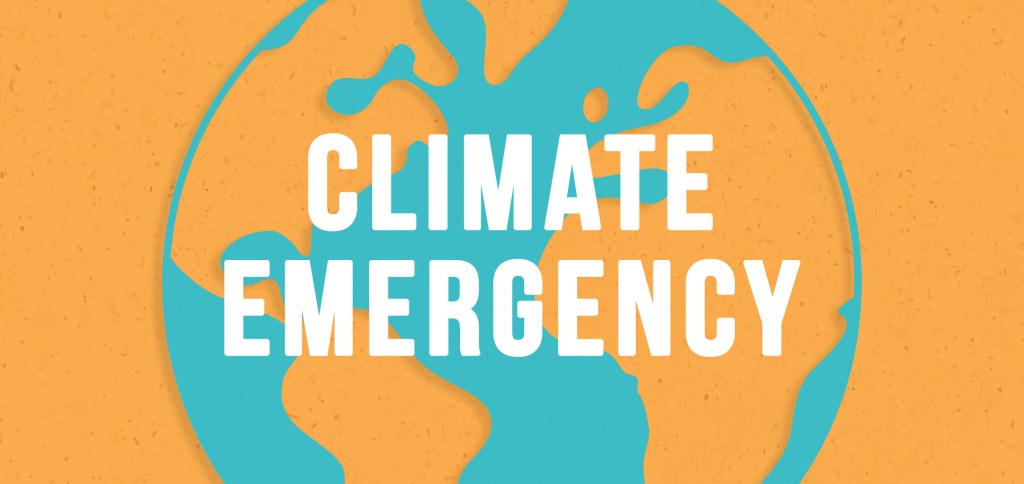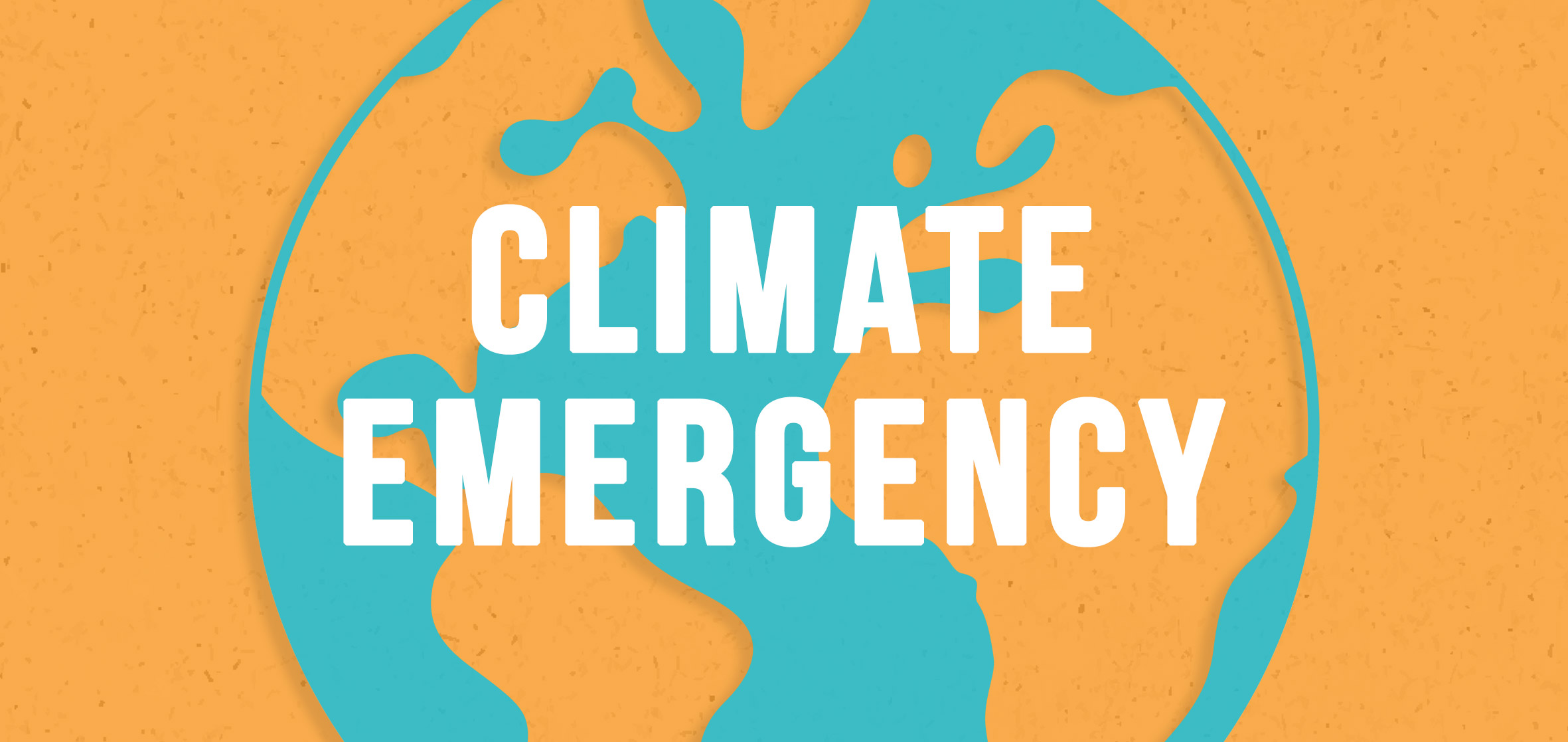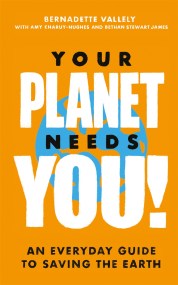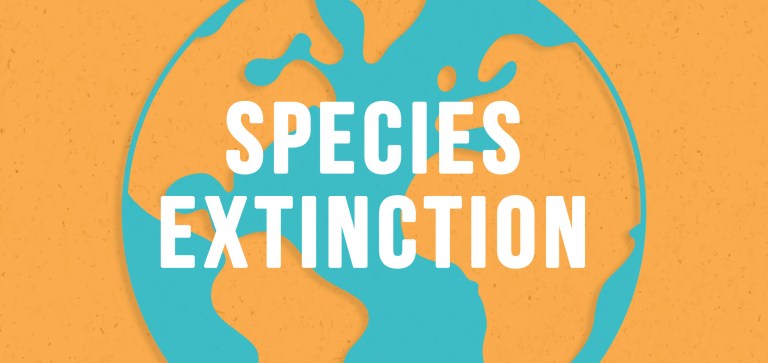What is the Climate Emergency and what can you do?


The following is an extract from Your Planet Needs You! by Bernadette Vallely, Amy Charuy-Hughes and Bethan Stewart James; three women from different generations who came together to create an informative and practical guide to the issues facing our planet and the steps YOU can take to make our future greener, fairer and more sustainable.
CLIMATE EMERGENCY
This is not an invention or a hoax. This is a real emergency.
Climate change is caused primarily by humans. Because of this we know we can change it. We already have the solutions. We already know the answers.
The Intergovernmental Panel on Climate Change, the scientific body of the United Nations, say these dangerous emissions come directly from burning fossil fuels and are the primary cause of climate warming. And they confirm it is human made.
It’s not rocket science! Climatologists remind us that unprecedented heat in the global temperature and unprecedented drought and lack of rain encourage unpredictable and unprecedented fires. When ice melts, the sea rises. When extreme weather conditions worsen, floods and fires become commonplace.
The climate is warming mainly because the large quantities of fossil fuels we are burning produce pollution in the form of carbon dioxide emissions and heat. The pollutants and heat are trapped in the atmosphere as if there is a greenhouse surrounding the planet, making everything inside hotter.
Fossil fuels, mainly coal, gas and oil; are used to power our cars, fly planes, heat our homes and run our industries. These all create carbon dioxide and the amount in the environment has been increasing steadily since the end of the Industrial Revolution in the 1860s.
Modern agricultural practices can compound the problem. Chemical fertilisers for example produce nitrous oxide, another powerful gas contributing towards rising temperatures. Decomposition from animal waste and manure piling on agricultural land produces methane gas emissions. Methane emissions are found in smaller quantities in the atmosphere than carbon dioxide, but each methane molecule is thought to be 84–104 times more powerful over twenty years than an equivalent carbon dioxide molecule in its ability to add to the trapped heat in the atmosphere. It is this trapped heat which is contributing to the temperature rising.
Cows emit methane when they fart and belch as well – a staggering 250- 500 litres each day per cow. The vast number of livestock and agricultural farms on the planet contribute about 14.5 per cent of the total pollutants causing the climate to heat, as reported by the Food and Agriculture Organisation of the United Nations.
A new study says that seaweed could help cows to fart less if they eat it with their other food.
Leakages in the oil and gas industry from unstable and corroding pipes make a significant contribution to the amount of methane in the atmosphere. As the Arctic ice melts more methane is also released from ancient stores in the soil and oceans beneath. These frozen molecules of methane are stored as natural gas in the permafrost and methane clathrate (a structure in which methane gas is trapped within ice). They are a naturally occurring form of methane but the melting ice is accelerating their release. The US Department of Energy warned us in 2008 that clathrate destabilisation in the Arctic would be the most likely scenario for an abrupt and catastrophic warming of the planet and life- threatening rising of sea levels.
The problem is exacerbated by the clearing of forests. Trees capture and keep carbon dioxide while supplying us with oxygen. Instead, as they are stripped and cleared and the land handed over to agribusiness, the carbon they have been storing is released and this adds to the warming. The new agricultural business further escalates the problem with soy bean plantations, cattle ranching and other enterprises which also contribute to climate related emissions.
This intensive human industrialisation has caused pollution levels and the overall temperature of the planet to rise, and at an alarming speed.
The climate crisis is directly leading to a global public health crisis. The World Health Organization estimates that at least 7 million people are dying each year from particles in air pollution from the burning of fossil fuels from heart and lung conditions. They are direct victims of the climate emergency. Heatwaves also cause multiple medical problems including heat-related infections and extra deaths from dehydration and heat exhaustion. The changing temperatures have also increased insect infestations and the subsequent additional bites and ticks have increased related illnesses in humans. In the heat, food is more likely to spoil and there are increased numbers of food poisonings and food rotting and spoiling early, further exacerbating people’s food insecurity and hunger. People living in areas of intense and sustained fires have suffered long term lung and heart illness from the stifling polluted air. From fires to flooding, increased pressure on emergency health services and mental health services is common in communities suffering the complex effects of extreme weather conditions. Homelessness and exhaustion from environmental emergencies causes massive stress and can lead to PTSD.
Unless we do something to slow it down, the temperature average will rise 5 degrees by 2100.
A hotter planet has already caused many geographical changes and new problems. The melting polar ice caps are pushing the sea level higher and leading to more flooding in low- lying areas. Many countries are finding sea levels are rising much more quickly than they believed possible.
Until the early twentieth century sea levels had remained consistent for almost two thousand years, but in the 100 years since, they have risen nearly 20 centimetres. That is alarming. That seemingly small amount already causes havoc.
A sea-level rise of just 2 metres would be catastrophic to the world. In the UK, all low- lying areas would be flooded and areas like Cambridgeshire would be permanently under water. Parts of New York, London and Rio de Janeiro would also be under water. The world would find at least 187 million people without their homes and land, according to the IPCC modelling studies.
The East Antarctic Ice Sheet has enough ice to raise the global sea level by another 53 metres if it melts.
The signs are there, all around us. Extreme weather conditions have increased and worsened, according to the United Nations. If your home has been flooded because the local river burst its banks after an extreme rainfall you will know the effects. Tens of thousands in the UK and millions of people across Europe and around the world have endured that in their homes and communities.
There are stronger typhoons and hurricanes now, more rain and heavier rain. This in turn causes landslides, flash flooding, and more damaging consequences to buildings and people and to the natural world.
If you have run away from a forest fire you will know it certainly is an emergency. In many countries, such as Australia, South America and the USA, drought and high temperatures make it all too easy for even a small spark to set the dry timber alight. Although wildfires on a small scale are natural and part of the forest cycle, the super-dry conditions have meant that the fires are bigger and there is a chain reaction that gets worse because of the climate crisis. The fires join up together, and they create their own weather systems, which cause lightning and even more fires. These wildfires destroy lives and communities. Climate change and pollution are turning extreme weather situations into very dangerous events and causing apocalyptic conditions to develop very quickly. The future looks bleak if we decide to do nothing.
Humans are suffering already. In the first half of 2019, more than seven million people were displaced in emergency conditions by extreme weather events. Millions more will lose their homes if sea levels rise and once-viable land floods.
When drinking water is contaminated by salty sea water it becomes undrinkable. In low- lying countries and islands this has already become a reality. Imagine having to ship in water from another country because your own water supplies were no longer safe to drink?
As the temperatures rise in the atmosphere and the water, the seas and oceans become acidic because the oceans absorb carbon dioxide. This carbon dioxide reacts with the salty seawater to create carbonic acid. Acidic sea water is dangerous for sea life. The coral reefs, home to 25 per cent of all marine species, are dying and the biodiversity of the ocean is severely affected.
Species are dying and becoming extinct on land and sea. This is the reality for the rest of the living species on earth. We are in earth’s sixth Mass Species Extinction. A study by the University of Connecticut in the US says that 8 per cent of all animals will become extinct directly because of the climate emergency.
The coronavirus pandemic stay-at-home orders caused a massive shutdown of the world economic engine as people worked from home or closed their businesses entirely. For the first time in thirty years we all had visual proof of the effect of our industrialisation and travel on world air pollution levels.
The results were immediate and dramatic around the world, prompting several governments and the public to call for wholesale reductions in carbon dioxide levels and a switch to less polluting industries. Some governments denied carbon polluting businesses grants and loans to continue, investing instead in greener alternatives.
Greta Thunberg says, ‘Thirty years of pep talking didn’t work. If it did emissions would have gone down already. We are currently burning 100 million barrels of oil a day. This has to stop. The rules have to be changed; everything needs to be changed.’
What can you do?
Your future life is in trouble. We are all in trouble. Don’t listen to those who are still saying that environmentalists are extreme or scaremongers. Their fear and inaction should not get in the way of your determination. Everybody has to get on board. We all need to be ‘green’ now.
The solution to the climate crisis is a multifaceted approach. From protecting bumblebees and elephants to taking fewer car journeys and saving energy, there is a lot to do.
On the planet, right now, are all the people and inventions, the machines and the solutions that are needed. Many small countries have made their own trials; they have proved so much is possible. There are carbon-free economies. There are ways to grow vegetables without chemicals. There are countries that operate without burning fossil fuels. There are communities that have always survived and left no footprint whatsoever. All that knowledge is here, provable and successful.
Only when we work together, however, can we make a difference to the icebergs melting, to the methane that might be released or to the emergency of species extinction. Only when governments and businesses work together can we come up with solutions and make them happen. Those big companies that have known and continued in a ‘business as usual’ manner are now on trial. Those big companies that paid millions to shareholders and nothing for environmental mitigation or to repair damage are now on trial. We, as citizens, must tell them that this attitude is not good enough. We must demand more.
Who else is to speak for the species at risk of extinction if not you?
You are not alone in worrying about the climate emergency. Go and see your council representative, your member of parliament, your lawmakers. Tell them what you are feeling. Let them know what is worrying you. Ask them to tell the truth. They are the ones who must put emergency measures in place and turn us away from danger.
Use your consumer power, boycott companies that don’t listen and contribute to polluting the planet. Tell them why.
Reduce your footprint. Adopt a one-planet lifestyle. Save energy. Don’t waste things. Use green energy like electric cars and solar power. Change your energy supplier to one that funds renewables and energy efficiency.
This is crucial: know how much carbon your life is responsible for. The average person is using two or three planets’ worth of resources in the UK. We only have one Planet Earth.
Stop shopping altogether unless it is for food or an emergency. See how long you can do this.
Stop buying plastic. Stop buying red meat and cheddar cheese: both use the most energy, water and resources to create as protein and therefore have a very high ecological footprint. Stop buying from agribusiness and start supporting local producers and farmers. Local shopping from artisans, bakers, cooks, farmers and growers reduces your footprint. Make buying local, organic and seasonal your priority in business.
Negotiate and barter, exchange and swap. Stop buying new things. Resist the emotional pull of new toys, new bright shiny electronic devices and plastic rubbish. Stop adding to the problem. Learn to love what you already have. Learn to expect surprises and gifts and stop the binge shopping. Give up on Amazon and online impulse shopping.
Stop buying things that have been flown and shipped around the world. Why do you need green beans from Peru (6,000 miles from the UK) when there is a seasonal glut in every allotment in the country? Or red apples from New Zealand (12,000 miles from the UK) when we have hundreds of British varieties? Buy local, eat especially in the season, and reduce the miles travelled and carbon footprint of the food industry.
Avoid household items that destroy the rainforests or encourage their destruction, further releasing carbon dioxide. Boycott products with palm oil in particular: get used to reading the ingredients labelling. Palm oil is in hundreds of everyday products especially cheap oils, butters, chocolates, pre-packaged food and cake frosting.
Reduce your own travel and stop flying around the earth. Take the train or boat. Change your plans. This is an emergency. Don’t fly at all unless you will personally pay the carbon price for it.
Plant more oak trees. Be part of the solution. A tree will absorb the carbon you have produced. Plant a thousand trees and offset your carbon for life, although they would take about forty years to work and you would need a large area of land! (We would need to plant 42 per cent of the planet with local trees to totally offset the carbon and stop climate change immediately, if we didn’t do anything else.) The single best way to capture your own carbon footprint in the future is to plant a tree. The oak has the best carbon- absorbing qualities and is indigenous to Britain. Of course, tree planting will only work for our children in the future. It is, however, an important part of the solution; in the long run it will save and protect biodiversity.
Reduce your footprint further. The whole of this book is designed to help you to have knowledge about an issue and take personal action as well as being part of a growing number of aware people who won’t hide from the difficult questions.
Open a bank account with a bank that cares about the planet. Banks like Triodos and the Co- operative Bank are ethical; they won’t work with companies that fund oil and coal production, that are involved in wars or other businesses that don’t meet their ethical standards. Don’t just open an account with the first bank you come across, do the research. Don’t put your money in a bank for the rest of your life in a business that won’t align with your principles. Do the same for your electricity account and choose a provider that supplies electricity from renewable energy sources.
See how many of these actions you can accomplish. Work with friends to share ideas and find ways to achieve your goals.
Read the science. Get to know what you are talking about. There is plenty of information out there. The issue should not be about arguing the facts about the climate emergency anymore, even if people tell you that. The scientists really do agree.
Ask your MP what they are doing. Have they called for emergency measures? How have they voted on environmental issues? Check their voting record before you meet them, with the site: TheyWorkForYou.com.
See more at #SixthMassExtinction #actnow #climateemergency #ourhouseisonfire #ClimateFact
Groups like Climate Action Network, Greenpeace, Friends of the Earth, XR (Extinction Rebellion) and the Transition Movement all campaign and work on the climate issue locally and internationally. The Climate Coalition is a nineteen- million- strong group representing 130 organisations in the UK working on climate issues. The UK Student Climate Network links together students under eighteen and organises hundreds of demonstrations. Fridays For Future organises the Friday School strikes.
Start a group in your school or college or local area.
Don’t believe it is real? Simple. Read the IPCC reports on the planet, agreed by thousands of scientists. Read the science as Greta Thunberg tells us. Decide for yourself.
Watch Sir David Attenborough’s BBC video Climate Change: The Facts on YouTube.
Remember, action can solve this. Action can take us from the brink to a new way of working with the earth. Don’t think it isn’t about you. It is about you. The solution includes you. We, all together, have to get on the programme to save the planet.






